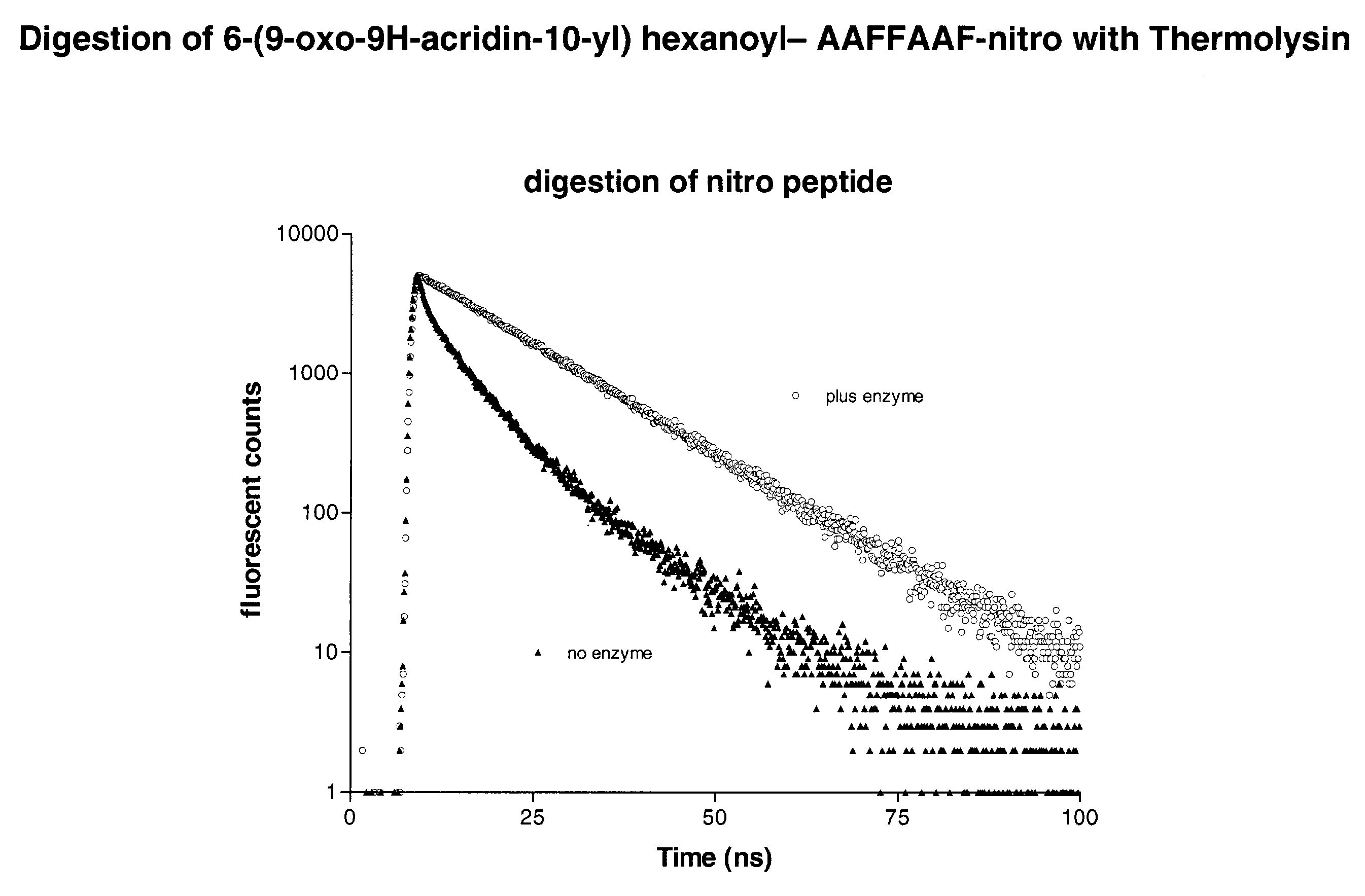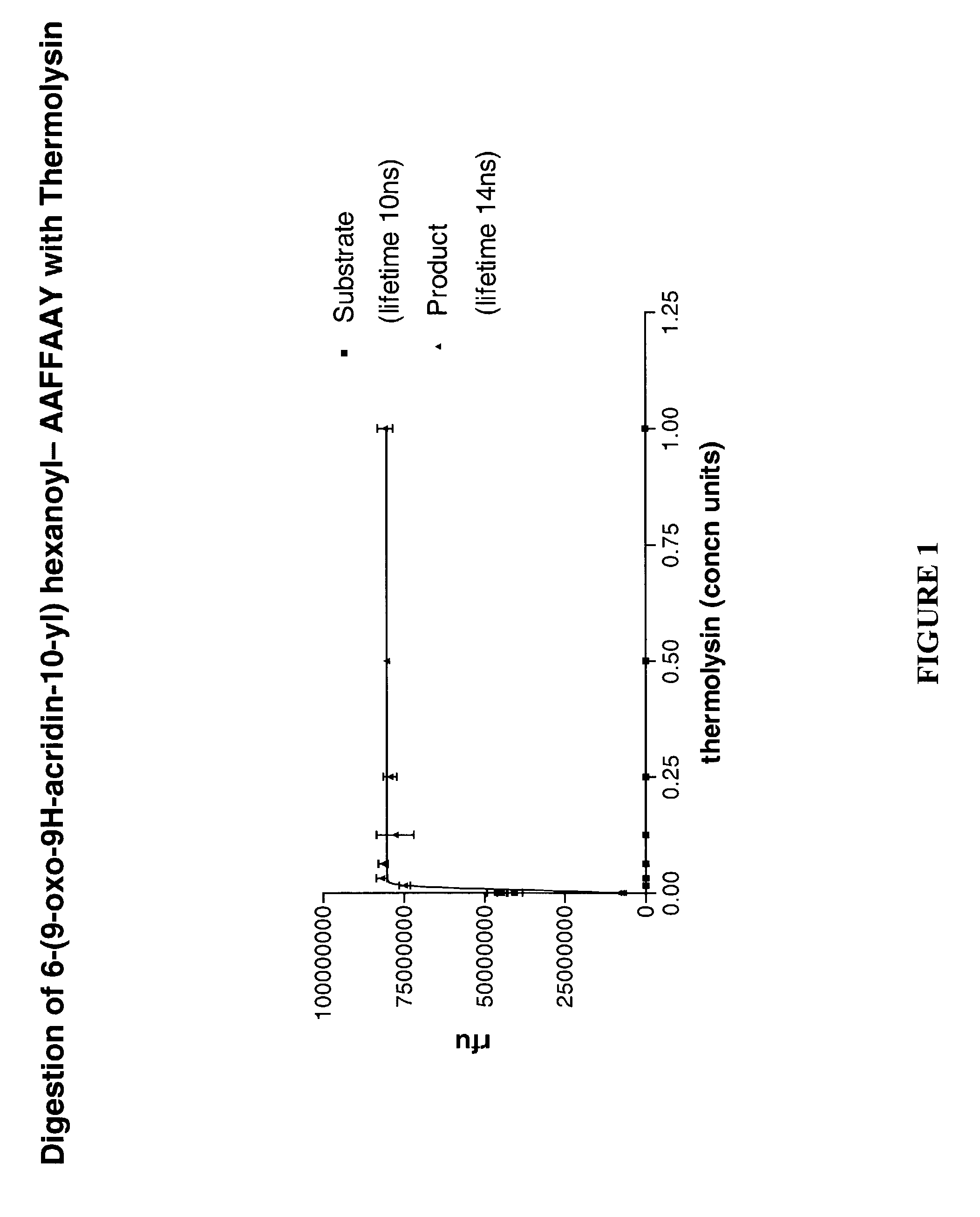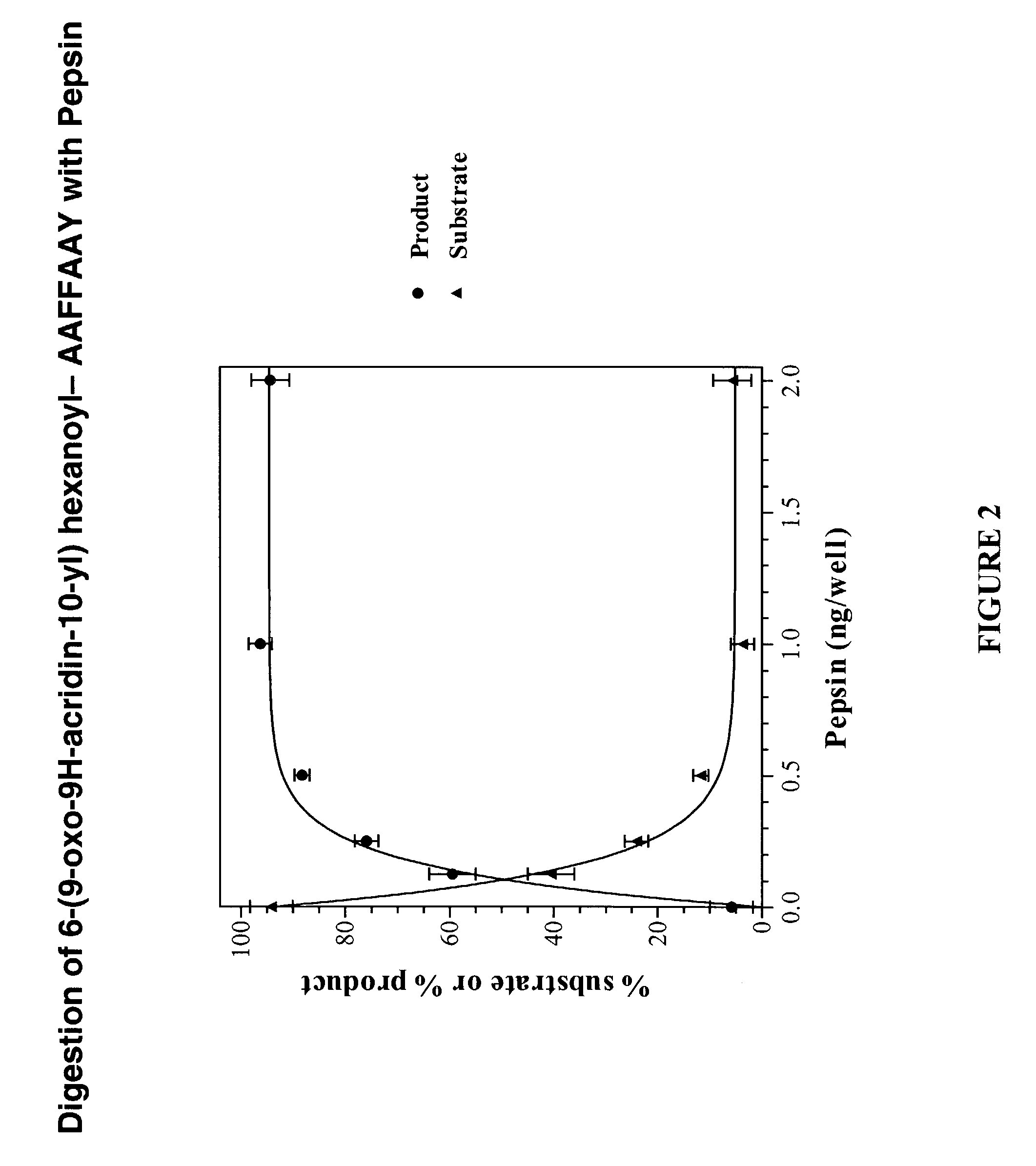Methods for measuring enzyme activity
a technology of enzyme activity and assays, applied in the field of fluorescence-based assays for measuring enzyme activity, can solve the problems of affecting the measurement of fluorescence lifetime, requiring analytical and/or purification and material costs, and requiring fret labels. , to achieve the effect of increasing fluorescence intensity
- Summary
- Abstract
- Description
- Claims
- Application Information
AI Technical Summary
Benefits of technology
Problems solved by technology
Method used
Image
Examples
example 1
Synthesis of 6-(9-oxo-9H-acridin-10-yl) hexanoyl -AAFFAAY-OH (SEQ ID NO:1)
[0124]Synthesis was carried out using an ABI 433a synthesiser using solid phase FastMoc chemistry with standard HBTU / DIEA coupling. Secondary protection of the fmoc protected amino acids was used on the following amino acid: Tyr(tBu).
[0125]6-(9-oxo-9H-acridin-10-yl) hexanoic acid was coupled to the peptide resin with all protecting groups present using PyAoP, diethylamine and N-methylpyrrolidone. The peptide was cleaved from the resin using 90% trifluoroacetic acid prior to purification.
[0126]Purification of 6-(9-oxo-9H-acridin-10-yl) hexanoyl -AAFFAAY-OH (SEQ ID NO:1) was carried out using reverse phase chromatography on a Vydac C18 protein and peptide column (250×50 mm) using a water / acetonitrile gradient containing 0.1% trifluoroacetic acid.
[0127]The purified peptide was analysed by reverse phase at 400 nm and found to have a C.P of 99.9% and have a monoisotopic MN+ mass of 1051 as expected for this labelle...
example 2
Synthesis of Acridone Labelled Peptide NH-AAFFAAF (NO2)- NH2 (SEQ ID NO:9)
[0131]The peptide was synthesised on an Applied Biosystems model 433A peptide synthesiser using standard Fmoc chemistry. At the end of the synthesis the N-terminal Fmoc group was removed; however the protected peptide was left attached to the solid support, in which form it was reacted with O—(N-succinimidyl)-6-(9-oxo-9H-acridin-10-yl) hexanoate. The labelled peptide was then cleaved from the solid support using standard techniques and then purified by reverse phase HPLC.
[0132]50 mg (0.0245 mmol) of the resin bound peptide was weighed into a silanized P87 vial into which was added 500 μl anhydrous DMSO. This was allowed to swell for ½ hour. To this was added 11 mg (1.1 eq) O—(N-succinimidyl)-6-(9-oxo-9H-acridin-10-yl) hexanoate dissolved in 0.5 ml of anhydrous DMSO followed by 1 ml DMSO vial washings and 200 μl (10%) of DIEA. The vial was placed on rollers with light excluded for 16 hrs at ambient temperature ...
example 3
[0136]The Asp-n protease substrate (6-(9-oxo-9H-acridin-10-yl) hexanoyl- CHLDIIW (SEQ ID NO:2)) was diluted to 100 nM in Tris buffer (100 mM pH 8.0). To the solution (100 μl) of the labelled substrate in a micotitre, 10 ng of enzyme (10 μl volume) was added. The fluorescence baseline prior to protease addition and the subsequent increase in intensity were recorded at appropriate wavelengths. The lifetime of the fluorescent species was also recorded. The results are shown in FIG. 5. Efficient quenching of fluorescence in the intact substrate results in a low signal. Protease-catalysed hydrolysis of the substrate removes this quenching, restoring the fluorescence. The increase in fluorescence intensity can be continuously monitored and is proportional to protease activity. Since the lifetime of the product and substrate are different it is possible to monitor both the appearance of the product and the disappearance of the substrate. The characteristic lifetime...
PUM
| Property | Measurement | Unit |
|---|---|---|
| wavelengths | aaaaa | aaaaa |
| volume | aaaaa | aaaaa |
| temperature | aaaaa | aaaaa |
Abstract
Description
Claims
Application Information
 Login to View More
Login to View More - R&D
- Intellectual Property
- Life Sciences
- Materials
- Tech Scout
- Unparalleled Data Quality
- Higher Quality Content
- 60% Fewer Hallucinations
Browse by: Latest US Patents, China's latest patents, Technical Efficacy Thesaurus, Application Domain, Technology Topic, Popular Technical Reports.
© 2025 PatSnap. All rights reserved.Legal|Privacy policy|Modern Slavery Act Transparency Statement|Sitemap|About US| Contact US: help@patsnap.com



